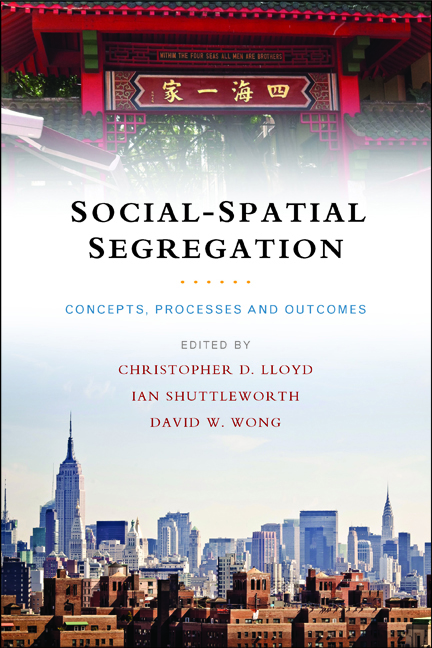six - Neighbourhood racial diversity and White residential segregation in the United States
Published online by Cambridge University Press: 04 March 2022
Summary
Introduction
The current interest in multiethnic metros (see, for example, Frey and Farley, 1996), global neighbourhoods (see, for example, Logan and Zhang, 2010), and urban intermixing (see, for example, Brown and Sharma, 2010) signal the emergence of urban environments characterised by growing and sizable non-White immigrant populations and their offspring. The emphasis on multiethnicity and mixing also draws attention away from Black–White isolation, the social division that motivated much of the original research on residential racial segregation in the US (see also Chapter Two, this volume). This chapter connects these newer diversities and older segregations by taking stock of recent changes in the neighbourhood geographies of people who identify as White. Using 1990, 2000 and 2010 US Census data to analyse all metropolitan areas exceeding one million people, we showcase the increasing racial diversity in these places and their census tracts. We focus on the neighbourhoods in which Whites constitute a large majority. The number and share of these tracts is diminishing everywhere, but the pace and form of this transition to greater diversity in neighbourhood space is uneven across and within metropolitan areas. We explore these transitions and their correlates and argue that ‘White flight’, a term redolent of the demarcation of the Black–White colour line and White suburbanisation in the late 20th century, has not slipped away in the multiethnic, global 21st century; it has found new spatial expression.
The racial and ethnic profile of the US has changed considerably in the last few decades. Immigration from Central and South America and parts of Asia drives these new demographic diversities and they play out on the ground in complicated ways. Newcomers and their offspring continue to settle, for the most part, in large metropolitan areas of the country. Additionally, new immigrants tend to concentrate within particular neighbourhoods, increasing Asian-White and Latino-White segregation in a number of places (Frey, 2011). At the same time, many urban neighbourhoods that were predominantly White are diversifying as non-Whites take up residence. These changes, of course, layer on top of the historic subordination of Blacks by Whites and the continued residential ‘hyper-segregation’ of African Americans from Whites (Massey and Denton, 1993; Wilkes and Iceland, 2004).
- Type
- Chapter
- Information
- Social-Spatial SegregationConcepts, Processes and Outcomes, pp. 111 - 134Publisher: Bristol University PressPrint publication year: 2014



